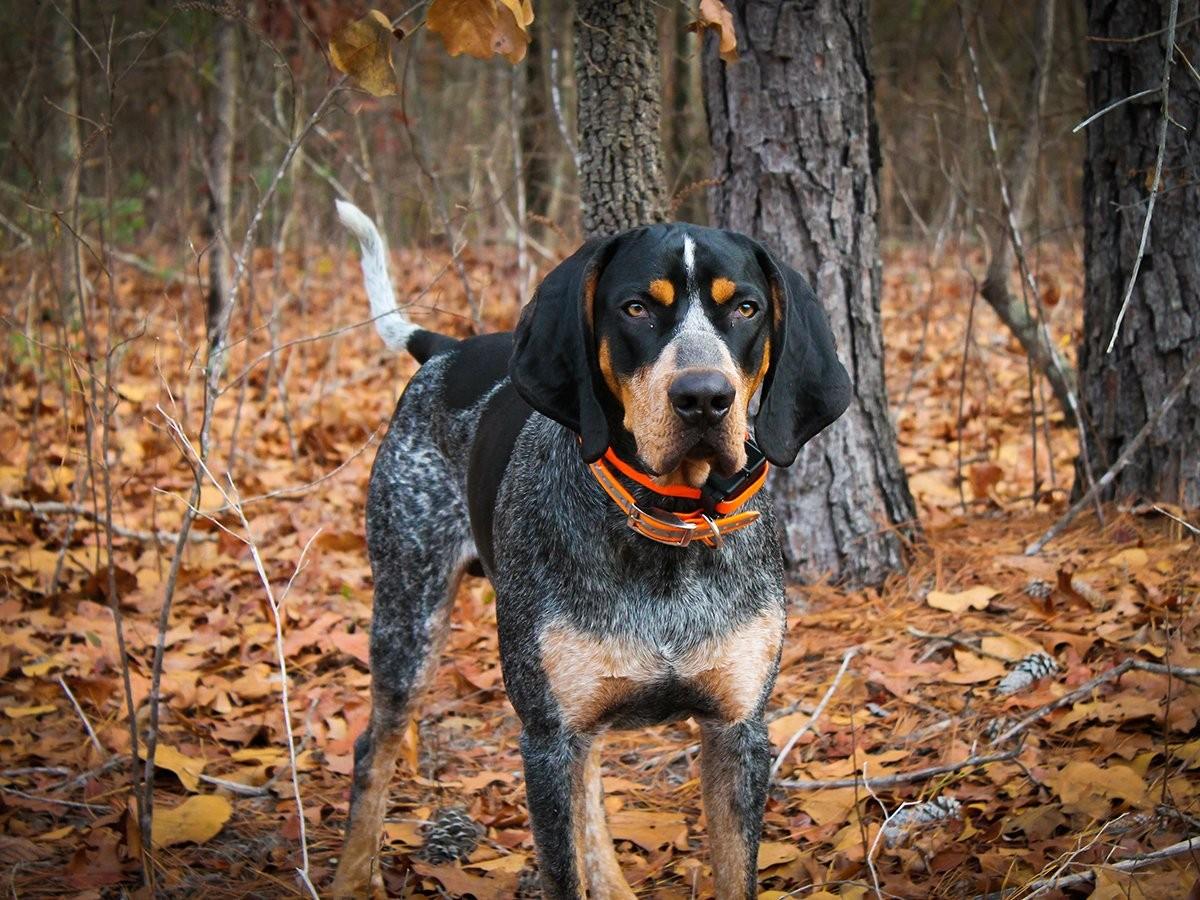
Coonhound
Coonhounds are calm, outgoing, and friendly dogs. Despite their tough exterior, they are extremely sensitive. These are scent hounds that hunt entirely by smell. They are friendly dogs and form a close bond with their owners, children and other pets in the household.
Breed Profile
Height
22 - 27
Inches
Weight
57 - 74
Pounds
Life Span
10 - 12
Years
Health
health
Progressive Retinal Atrophy (PRA)
What is it?
Progressive retinal atrophy (PRA), is a disease that affects the photoreceptor cells which affects a dog’s ability to see. PRA is an inherited disease that occurs in many breeds of dogs and also occurs in mixed breeds as well. It predominantly affects the rods and cones of the retina, which detect light, movement, and color.
Clinical signs
Dilated pupil
Abnormally reflective eyes when a light shines on them
Hesitance to go downstairs
Cataract formation in both the eyes
Difficulty seeing in bright light
Treatment
Treatments may include surgery and prescription medications.
Eligible vet bill
$2,000
*Hypothetical reimbursement examples illustrate reimbursement of an eligible vet bill at the noted reimbursement rate, assuming the annual deductible had already been satisfied and the annual coverage limit has not yet been met. Annual deductible, co-insurance, benefit and coverage limits, and exclusions may apply. Eligibility may vary. Visit https://spotpetinsurance.ca/sample-policy for full terms. For Canada enrollments only, reimbursement rate is based on the pet's age.
health
Elbow Dysplasia
What is it?
Elbow dysplasia means “abnormal development of the elbow joint in young, large, rapidly growing dogs. It involves abnormal bone growth, cartilage development, or joint stresses. In young, large, and giant breed dogs, elbow dysplasia is the most prevalent cause of forelimb lameness. Elbow dysplasia is much similar to Hip dysplasia.
Clinical signs
Early symptoms typically include lameness and weakness in the dog and elbow pain as well. Dog's unwillingness to climb stairs or jump up onto a couch or other height.
Treatment
The treatment measures may include:
Chiropractic therapy
Anti-inflammatory painkillers
Eligible vet bill
$2,000
*Hypothetical reimbursement examples illustrate reimbursement of an eligible vet bill at the noted reimbursement rate, assuming the annual deductible had already been satisfied and the annual coverage limit has not yet been met. Annual deductible, co-insurance, benefit and coverage limits, and exclusions may apply. Eligibility may vary. Visit https://spotpetinsurance.ca/sample-policy for full terms. For Canada enrollments only, reimbursement rate is based on the pet's age.
Personality
Affectionate
These dogs are extremely loyal and affectionate towards children and their owners
Energetic
Coonhounds possess great energy and should be trained well to be energetic outside and a laid-back pooch inside the house, their boredom can easily lead to destruct in-house by chewing or barking around
Active
Due to their high energy levels, you won’t find them lounging in the house but constantly willing to go outside and play
Lifetime Care
Coat
Short and dense coat, which are easy to groom
Colors
This breed comes in the widest variation and pattern from bluetick, redtick to black and white
Hypoallergenic
No
Grooming
The coat is short and dense and requires minimal grooming. An occasional brushing is usually sufficient. This breed has minimal shedding
Training
The breed requires early socialization with other puppies for good behavior when they grow up. Training a coonhound is not difficult if done correctly. Most coonhounds are food-oriented and will go to great lengths for a dog cookie. The breed’s prey drive and seemingly endless energy can sometimes stand in the way of training, as they're not always keen to engage in activities that don't require hunting.
Coonhound: Introduction to the Breed
They are the descendants of English foxhounds. English foxhounds were bred with other hounds to create the American Coonhound. When they’re on the trail these are smart, high-energy dogs with singular determination.
Coonhounds are medium to large athletic dogs with high endurance and are known as scent hounds. These dogs are first and foremost working dogs, hunting both large and small game. Though friendly and easygoing, these hardy hounds require so much physical activity that they should be paired with an owner who will take them hunting, jogging (on dirt or grass, not concrete), hiking, and/or swimming.
Coonhound Features –
Medium to large-size breed
Long ears
Short fur
Muscular built
Coonhound is best suited for:
The ideal coonhound owner is patient and committed to providing the attention and training that they require. They are well suited for families who can look after these dogs throughout the day rather than leaving them alone for longer hours which can get them bored and lead to chewing, barking and jumping around. They should be trained well from the start and they’ll be the most affectionate and friendly pets.
Things to watch out for before deciding to own a Coonhound
Unless they are extremely well-trained, coonhounds do not make good off-leash dogs.
If they are left alone for an extended period of time, they will develop problem behaviors such as fence climbing, chewing, digging, or barking.
Vigorous exercise requirements to keep them active mentally and physically
Destructiveness when bored or not exercised enough
Is a Coonhound a smart dog?
Training is of utmost importance and should be done right at an early stage. This breed is very intelligent and eager to learn. These hounds love to please their people, but they also have a stubborn, independent streak. This can make them seem difficult to a trainer who doesn't understand the coonhound brain. Coonhound is likely to resist training and will need plenty of regular exercises to be a calm, laid-back dog inside the house.
Conclusion
Coonhound makes a good family dog due to its affectionate, sweet personality. They are also known for their unique, expressive personalities and talkative nature. This breed has simple grooming needs. Coonhound’s loud bark is more than adequate to warn a family of someone on the property, and acts as a great watchdog, if you are looking for dogs with such features, you have found one.
Sources:


